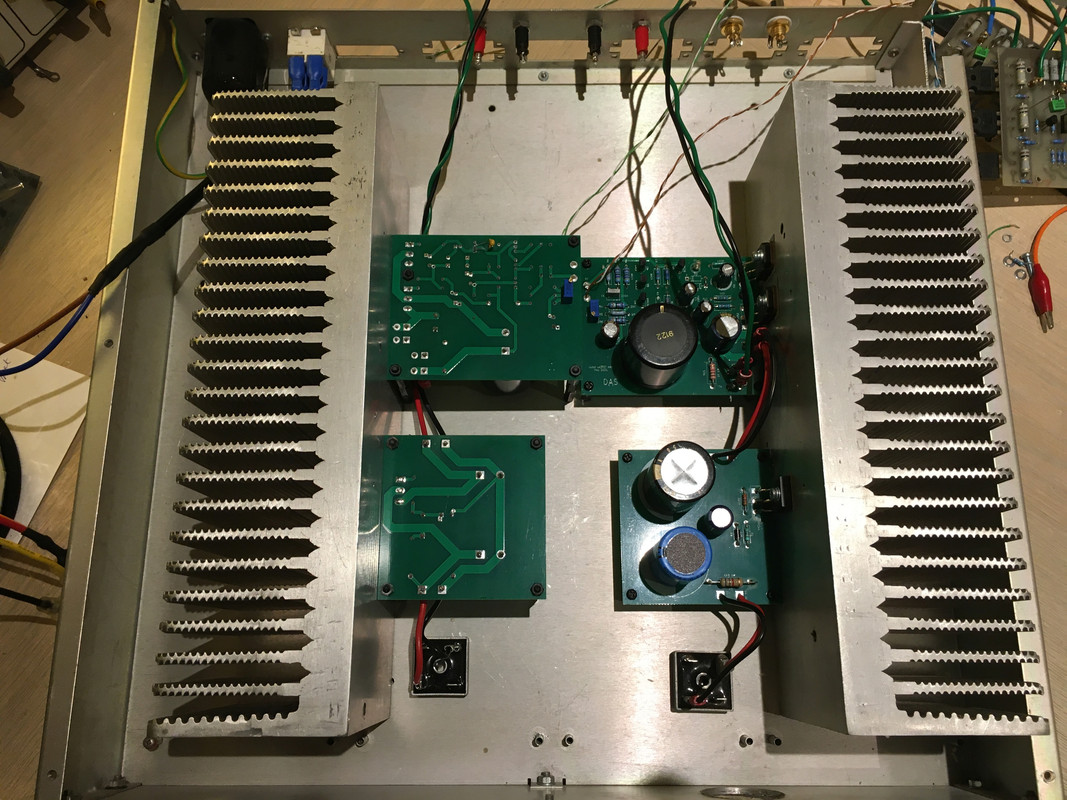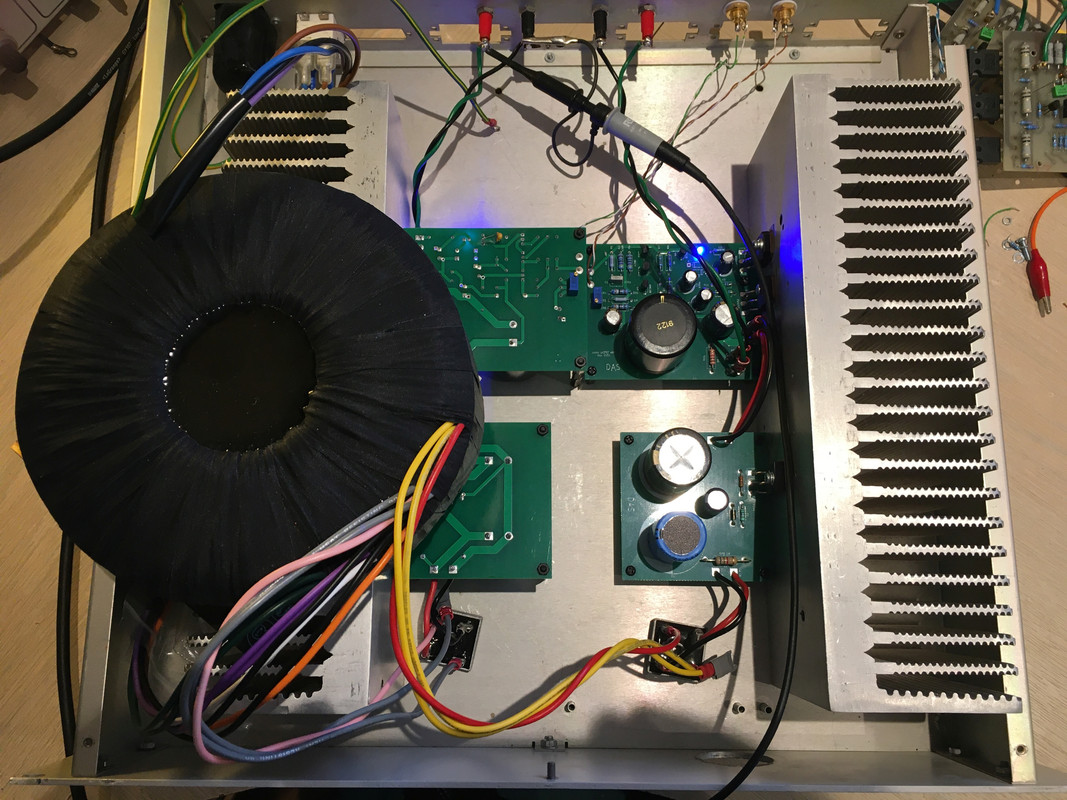S-Man
StrivingON
Here is my latest project:

It is a single rail high bias class A/B mosfet amp.
It runs at 0.5A quiescent current, so it's "pure" class A up to only about 1A. Hence it's "Contaminated"
class A up to only about 1A. Hence it's "Contaminated"  .
.
The schematic can be found in post #180 here:
https://www.diyaudio.com/community/threads/25w-class-a-amp-with-lateral-mosfets.183482/page-9
It's been running on the bench PS where I had to sort a couple of bugs. It's now ready for final wiring into the test mule chassis. Although I seem to have overlooked a key detail .
.
The heatsinks have been repurposed from the Aleph5. They are actually a bit OTT for burning off 20WPC.
It's supposed to be a very fine sounding. I expect I will find out soon.

It is a single rail high bias class A/B mosfet amp.
It runs at 0.5A quiescent current, so it's "pure"
The schematic can be found in post #180 here:
https://www.diyaudio.com/community/threads/25w-class-a-amp-with-lateral-mosfets.183482/page-9
It's been running on the bench PS where I had to sort a couple of bugs. It's now ready for final wiring into the test mule chassis. Although I seem to have overlooked a key detail
The heatsinks have been repurposed from the Aleph5. They are actually a bit OTT for burning off 20WPC.
It's supposed to be a very fine sounding. I expect I will find out soon.


